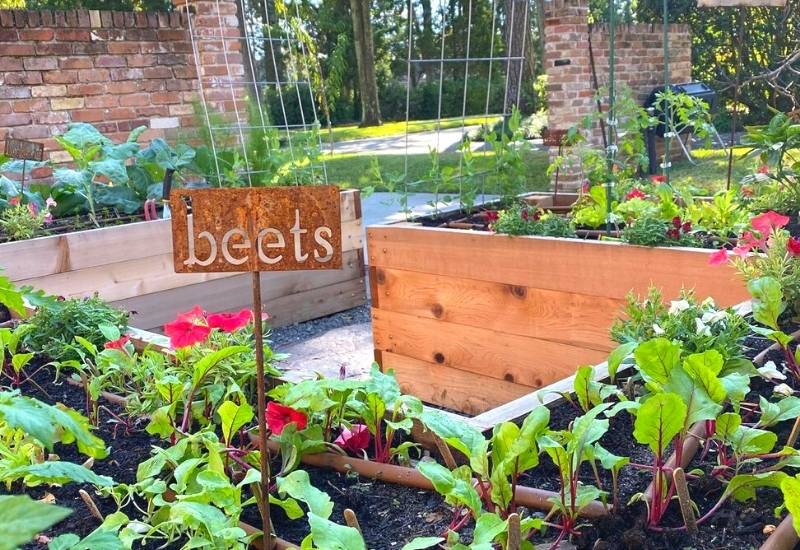
Beets are a cool-season root vegetable that have been eaten since antiquity. They are an easy vegetable to grow and are a great addition to any vegetable garden. (Even if your family does not like the taste of beets, the health benefits will not be wasted on your family dog).
To help your beets grow and thrive, you can plant them with mutually beneficial plants, in a practice called companion planting. Beets grow well with Alliums (onions and garlic), bush beans, lettuce, radishes, strong-scented herbs, Brassicas (like broccoli and cabbage), corn, and oats.
On the flip side, some plants can be detrimental to your beets’ growth, such as pole beans, field mustard, and chard.
Learn about some of the best companion plants for beets, as well as what you should avoid planting next to beets.
We may earn commission from links on this page, but it won’t cost you extra. We only recommend products we’ve personally used or believe will benefit our readers. Why Trust Us?
What Is Companion Planting And How Does It Benefit Beets?
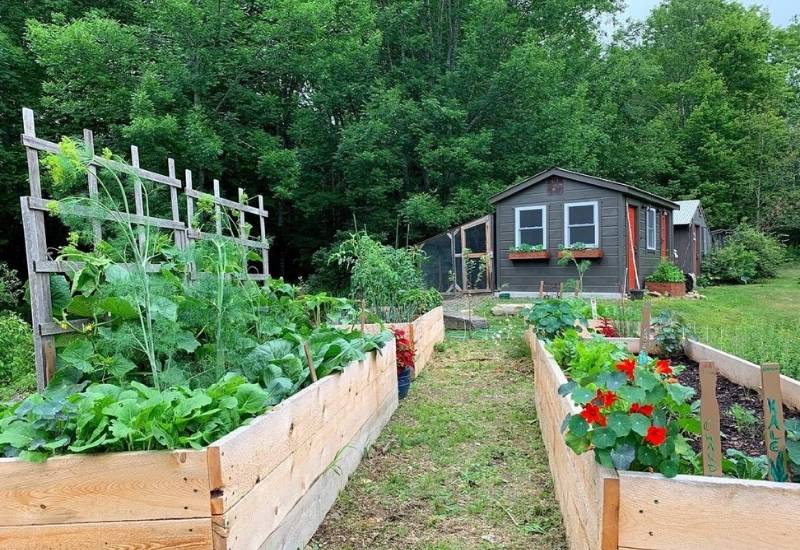
Monocropping, growing only one plant in a field, is one of the worst plights of modern agriculture. Growing a single crop will strip the land of nutrients and expose the crop and the soil to diseases and pests.
We often think of monocropping as a problem that farmers face in a large field, but it can also happen in your backyard garden, too.
Monocropping does not exist in nature. Instead, nature creates a diverse growth of symbiotic plants. We can replicate this symbiotic relationship in our gardens with companion planting.
Companion planting, or growing mutually beneficial plants together, will help your beets in a number of ways:
Best Companion Plants to Grow With Beets
While beets can be grown successfully with a number of different vegetables, herbs, here are a few that have the most benefit when used as a companion plant.
1: Onions
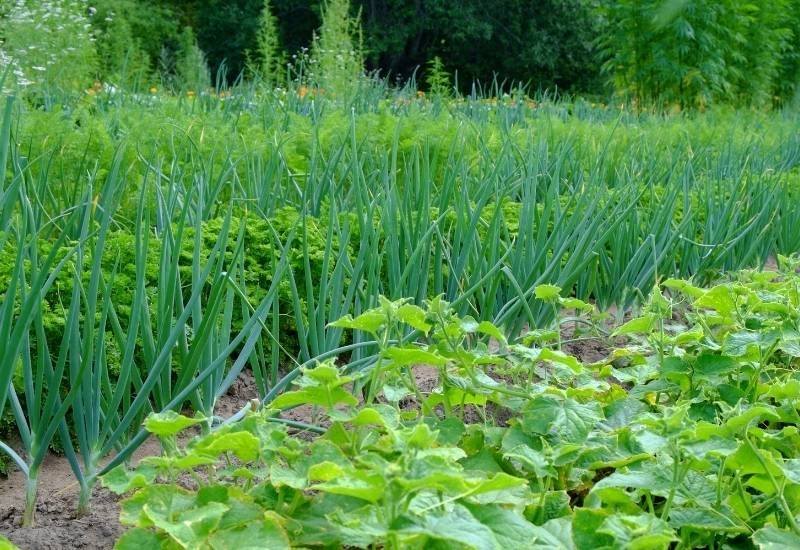
Far and away the best beets plant companions are all members of the Allium family, as bulb onions, scallions, leeks, chives, shallots, and garlic.
Plants in this group are known as the “stinking lilies” and their pungent odor can deter many creatures that threaten your beets. Onions can be used to repel many different bugs that can destroy your beet crop, such as the sugar beet flea beetles.
Plants in the onion family have also been known to repel mammals, including rabbits, deer, gophers, and groundhogs to name a few. Gophers and ground squirrels are a particular problem in our own garden, and we are rethinking our crop rotation so that our scallions and beets are interspersed with each other to help ward off these ever-hungry invaders.
Garlic is an excellent choices when companion planting beets, it has many special qualities of its own that deserve special mention. As well as having the advantages listed above, garlic has several of its own benefits that it brings to your plot of beets.
For starters, many gardeners have found that growing garlic with your beets will actually improve the flavor of the beets. This is particularly important if you or your family does not like the taste of beets.
Beets contain the compound geosmin which literally means “dirt smell” and is why many people think that beets are gross and taste like dirt. If you have a picky eater in your house, try growing garlic with your beets and see if you can’t turn them around.
Another benefit of growing garlic and beets together is that garlic releases sulfur into the soil as it grows. Sulfur is a natural anti-fungal that helps reduce many diseases that plague the beet grower.
2: Bush Beans
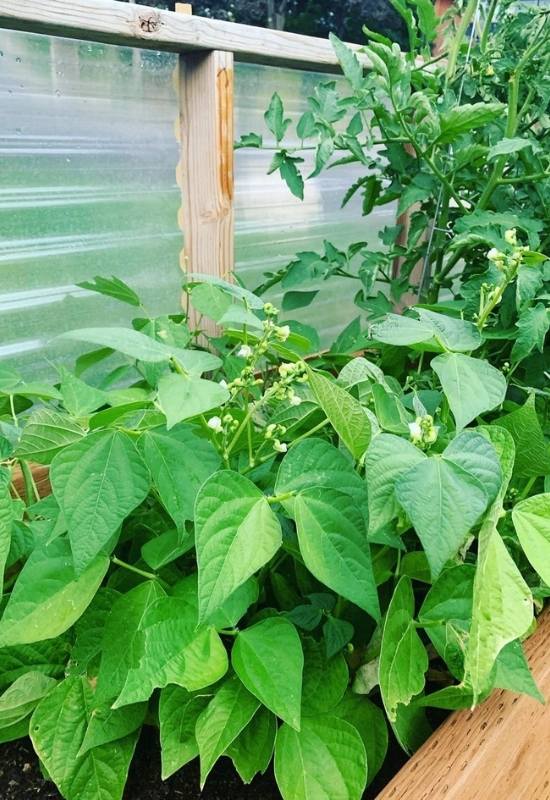
As they grow, beans and other legumes improve the soil through a process called nitrogen fixation.
These legumes take nitrogen out of the atmosphere and convert it into ammonia, nitrates, and nitrites, which are then released into the soil where they can be absorbed by other plants.
Nitrogen improves a plant’s green leafy growth, so too much nitrogen can actually be bad for your beets by making lots of leaves at the expense of the root.
However, all the different bush beans and soybeans add just the right amount of nitrogen to the soil to stimulate good beet growth. (Below, we will talk about the dangers of pole beans.)
Seeds are in stock and ready for purchase at Trueleafmarket.
3: Lettuce
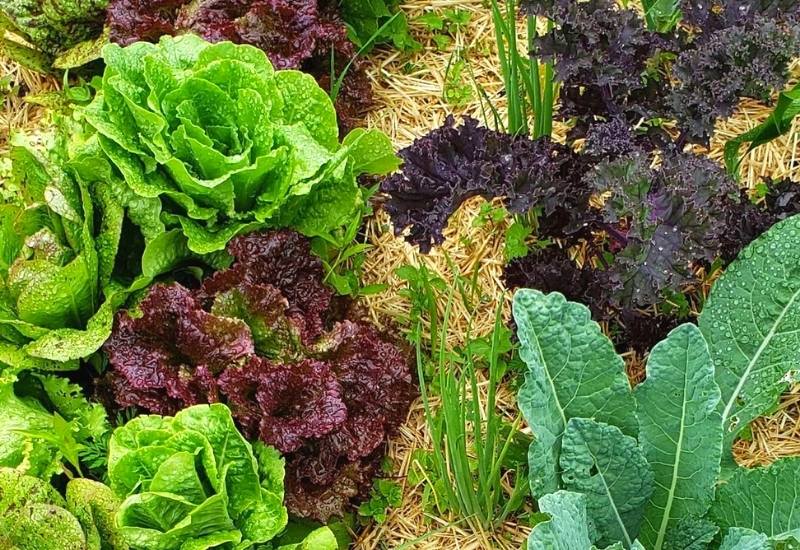
While lettuce might not improve your beets, growing them together will benefit your garden as a whole. Lettuce has a very shallow root system so it can grow right beside your beets.
The lettuce will use nutrients available near the surface of the soil, while the beet’s taproot will draw nutrients from down below. This will help fight against crop failure, and you can get two crops from a compact space.
Planting lettuce in between your beets will also fill dead space and cover any bare soil, helping retain moisture that might be lost through evaporation.
The lettuce will also help in hot weather by blocking the sun from overheating the soil and providing shade for your beets.
Seeds are in stock and ready for purchase at Trueleafmarket.
4: Radishes
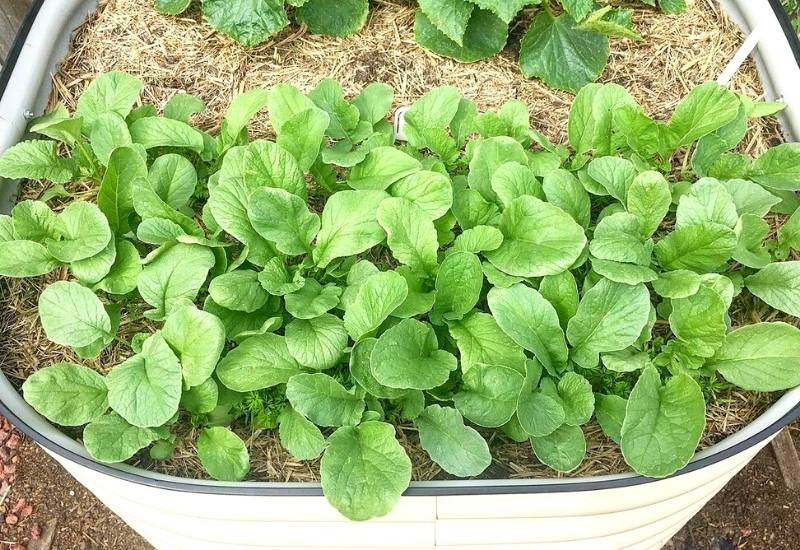
Cool season crops such radish also pair nicely with beets in the garden A radish is a fast-growing root crop, and you can use these qualities to benefit your beets.
If you sow radish seeds with your beets, the radishes will germinate before the beets, marking the row for you and allowing you to thoroughly weed the area without disturbing the beets that have not germinated yet.
Radishes also grow quite quickly, and you will be able to harvest them first. Not only will this give you a second crop, but it will give the beets extra space to grow and can help loosen the soil for the developing beetroots.
Seeds are in stock and ready for purchase at Trueleafmarket.
5: Aromatic Herbs
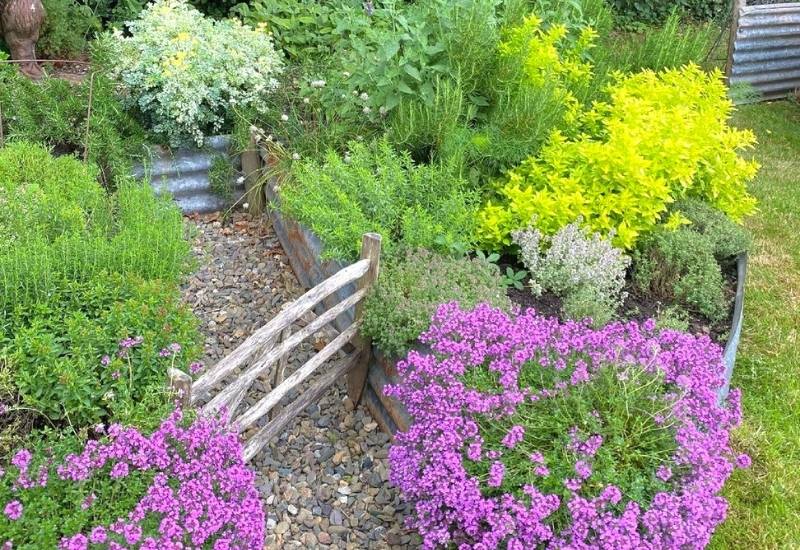
The intense aroma of many herbs, such as thyme, hyssop, rosemary, mint, and catnip make excellent companions as their scented oils will help repel beet-eating pests.
All varieties of mint will chase away undesirables that will try to eat your beets. Even sprinkling shredded mint leaves on the ground will deter the pests, but growing the plant is a much more sustainable method of control.
One thing to watch out for is that mint is a notorious spreading perennial and can quickly take over your garden. Try growing your mint in pots to contain its spread, and then you can move the pots around the garden to position them for maximum pest control.
Catnip is also a very good non-beneficial bug repellent. As a bonus, it also helps keep away voles and mice. While attracting the neighbour’s cat into your garden might be a bit of a nuisance, perhaps the added feline presence will further deter rodents from setting up camp.
6: Brassicas
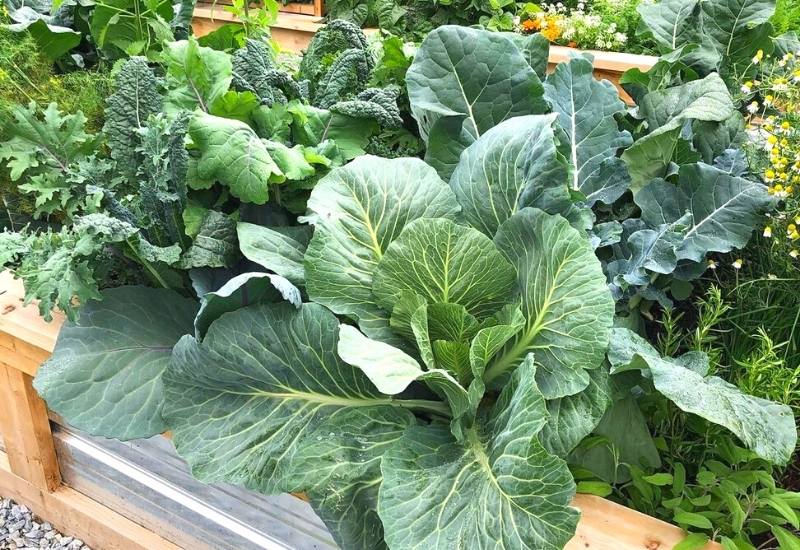
Members of the Brassica family such as broccoli, cauliflower, cabbage, rutabagas, and turnips are all excellent choices when companion planting beets. Not only will brassicas help your beets, but your beets can be a big help to your brassicas.
Beet leaves are high in manganese and iron, and any leaves that fall or are tilled back into the soil will give a boost to the brassicas.
For a three-fold companion planting, grow beets, cabbage, and mint together. The beets and cabbage will benefit each other, while the mint will deter insects and mammals while improving the flavour of the cabbage.
While brassicas are a great benefit to your beets, mustard is the one exception as we’ll see later.
7: Corn

While corn is more commonly associated with the Three Sisters companion planting, corn and beets grow very well together and they will both benefit the other.
Seeds are in stock and ready for purchase at Trueleafmarket.
8: Oats
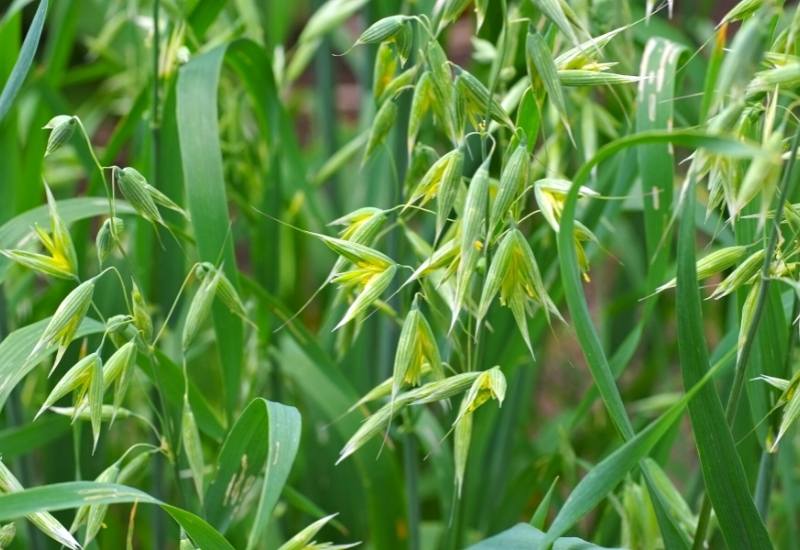
Growing your beets with oats can help reduce damage caused by the sugar beetroot maggot. Try sowing your beets into a living mulch, or undersow your beets with a green manure of oats.
Seeds are in stock and ready for purchase at Trueleafmarket.
3 Plants To Never Grow Near Beets
While companion plants will benefit your beets, here are some plants that can hurt your beets and they should not be planted nearby. Thankfully there are only three plants to watch out for.
1: Pole Beans
Though most kinds of beans benefit beets, pole beans are an exception. Pole beans and beets will stunt each other’s growth, and the excess nitrogen from the pole beans will create beets with a large top and a little beetroot. Seeds are in stock and ready for purchase at Trueleafmarket.
2: Field Mustard
Field mustard is actually in the same family as broccoli and cauliflower, but beets grown with this particular brassica have been found to grow quite poorly.
3: Chard
While chard will not directly hurt your beets, they are a very similar plant. As such, pests and diseases that are drawn to chard also like devouring your beets. Planting these two together can create an ideal habitat for undesirables. Seeds are in stock and ready for purchase at Trueleafmarket.
Conclusion
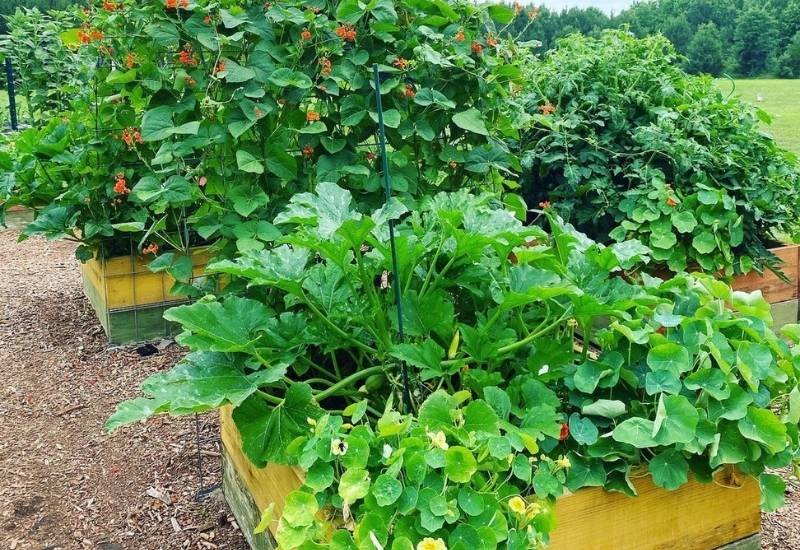
Companion planting is a timeless practice that has immense benefits for the garden.
Incorporating companion planting in crop rotations will keep the garden in balance and will aid and protect our vegetables.
If you want to cultivate the best beets you can, consider companion planting to help your beetroots grow and thrive in the way nature intended.

Written By
Amber Noyes
Amber Noyes was born and raised in a suburban California town, San Mateo. She holds a master’s degree in horticulture from the University of California as well as a BS in Biology from the University of San Francisco. With experience working on an organic farm, water conservation research, farmers’ markets, and plant nursery, she understands what makes plants thrive and how we can better understand the connection between microclimate and plant health. When she’s not on the land, Amber loves informing people of new ideas/things related to gardening, especially organic gardening, houseplants, and growing plants in a small space.
